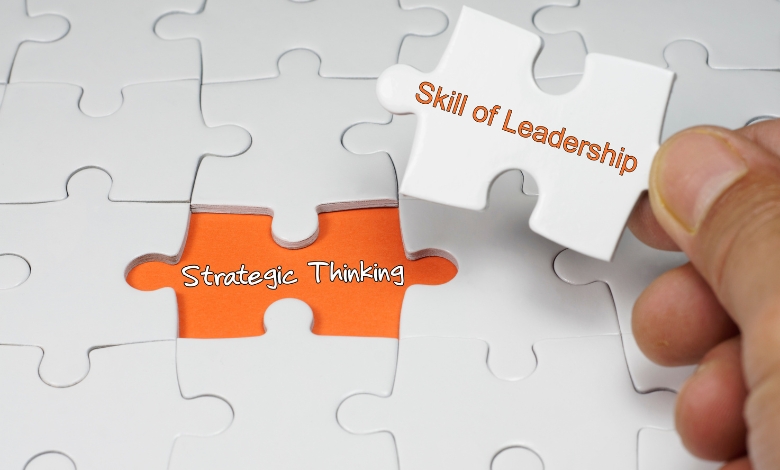Explore strategic leadership: its definition, key qualities, and real-world examples that drive success in organizations.
Thinking back on my path through several leadership positions, it is clear that the idea of strategic leadership has been a guide in both my personal and work growth.
Early in my career, I remember a key assignment where I had to lead a diverse team on a tough project.
Believing in the ideas of strategic leadership, I gathered my team to not only set our goals but also inspire them with a shared vision.
I support honest communication where everyone can share thoughts and observations.
This approach promoted teamwork and helped us to effectively handle the complexity we faced.
That experience showed me that strategic leadership is about empowering people, matching their autocratic leadership skills with the company’s goals, and fostering an innovative and strong culture rather than just task direction.
The knowledge I gained during that time has helped me to shape my leadership approach and strengthen my belief in the transforming power of strategic leadership.
Let’s get started.
Article Breakdown
What is Strategic Leadership?

Strategic leadership is the ability to inspire others in an organization to willingly make decisions that improve the chances for long-term success of the company while keeping temporary financial stability. Under this leadership strategic method, one creates plans to reach a vision for the future, then inspires others to properly carry out these plans.
Years ago, I worked with a mentor who personified strategic leadership. He constantly kept his eye on the bigger picture even while focusing on the current tasks. He gathered our team one day during a key project and shared his idea for how our efforts would shape the future of the business. His contagious excitement inspired us to push past our own boundaries. His leadership helped me to understand the true value of strategic planning and vision.
The Importance of Strategic Leadership
One cannot stress the value of strategic leadership too much. Leaders who can foresee changes, grab opportunities, and reduce risks are much needed in the fast-paced and always changing corporate environment of today. Strategic leadership ensures that companies not only survive but also thrive under difficult circumstances.
Qualities of a Strategic Leader
A strategic leader differs from conventional leaders in a special set of qualities.
Among these are:
I once worked under a strategic leader whose remarkable simplicity in communicating difficult concepts was evident. He held frequent meetings to inform us about the state of affairs and the strategic plans during a stormy phase for the company. His openness and direct communication calmed us down and kept the team driven.
The Role of a Strategic Leader
A strategic leader has a complex role with many main duties.
These include:
Our strategic leader visited every department during a significant organizational change to learn about their issues and viewpoints. This not only produced a better unified plan but also made everyone feel valued and part of the process.
Leadership Strategy Examples: Successful Leaders Who Utilized Strategic Leadership
Several leaders have shown by their successes the power of strategic leadership.
Here are some strategic leadership models:
I had the chance to attend a conference with Indra Nooyi as the keynote speaker. Her focus on sustainability and her analysis of strategic decision-making really stayed with me. It was clear that PepsiCo’s success had been greatly shaped by her leadership.
Why Develop Strategic Leadership Skills
Those hoping to lead successfully in today’s complex corporate environment must first develop strategic leadership qualities.
Here are some reasons these skills are vital:
Early in my work, I came to see the value of leadership under pressure on a project. The head of my team urged us to look ahead and see how our efforts would support the long-term goals of the business rather than just the daily tasks. This inspired us and made us proud of our work and more accountable.
How to Develop Strategic Leadership Skills
Developing strategic leadership skills requires both a conscious effort and a dedication to lifelong learning.
These practical tips will help you improve your strategic leadership:
I once took part in a leadership development program that stressed strategic thinking. Through various exercises and simulations, I developed the ability to evaluate tough situations and make wise decisions. This was a transformative experience that greatly enhanced my strategic leadership ability.
Challenges and Obstacles Faced by Strategic Leaders
Strategic leadership presents certain difficulties even if it has many advantages.
Typical challenges experienced by strategic leaders include:
Our strategic leader in my former business faced great resistance from several team members during a big overhaul. He spent time addressing their issues, explaining the reasons behind the changes, and included them in the planning process rather than moving forward forcefully. Gradually, this approach won their acceptance and eased the transition.
The Intersection of Leadership and Strategy
Strategic leadership really shines at the crossroads of leadership and strategy. Good leaders know that strategy is an ongoing process needing constant review and adjustment rather than a one-time blueprint. Organizations can achieve their long-term goals and stay flexible and responsive to changes by combining leadership with strategic planning.
Integrating Leadership with Strategic Planning
Including leadership into strategic planning requires the following steps:
One of my jobs included membership in a group on strategic planning. Our head stressed the need for aligning our strategic goals with the vision of the business. He pushed us to consider different viewpoints and be creative. This teamwork produced not only a strong strategic plan but also a sense of responsibility and commitment among the members.
Frequently Asked Questions (FAQs)
1) What are the key qualities that define effective strategic leadership in organizations?
Visionary thinking, flexibility, sound judgment, great communication skills, and high emotional intelligence describe effective strategic leadership. These traits help a strategic leader to steer their company toward long-term viability.
2) How do leadership and strategy work together to drive organizational success?
Setting a clear vision, creating detailed strategic leadership strategies, motivating implementation, and ongoing monitoring of progress help strategy and leadership to coexist. This integration ensures that the company stays on track to achieve its goals.
3) What traits distinguish a successful strategic leader in today’s dynamic business environment?
Effective strategic leaders are ethical, forward-looking, creative, tough, and team players. These qualities enable them to handle complexity and steer their companies toward ongoing success.
4) In what ways can leadership and strategic planning be aligned to achieve long-term goals?
Defining strategic leadership, establishing measurable goals, creating action plans, empowering the team, and always monitoring progress align leadership with strategic planning. This alignment ensures coordinated efforts toward long-term objectives.
Conclusion
Achieving long-term corporate goals requires combining strategic planning with leadership.



